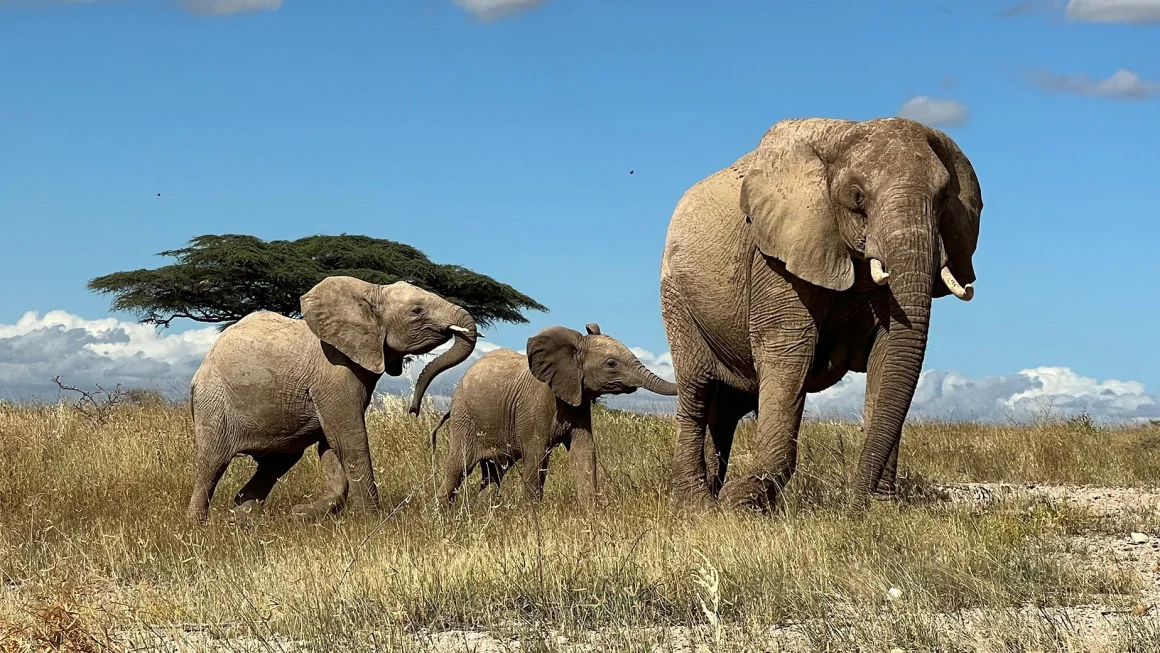Elephants’ Unique Communication: Calling Each Other By Names
Recent research has revealed that wild African elephants have a unique way of communicating by using specific, individualized calls that resemble personal names used by humans. Published in the journal Nature Ecology and Evolution, this groundbreaking study highlights the advanced cognitive abilities of elephants.
Machine Learning and Decades of Data
The study utilized data collected from 1986 to 2022 in Kenya’s Amboseli National Park and Samburu and Buffalo Springs National Reserves. During this period, researchers recorded 469 different calls from wild female elephants and their calves. A machine learning model analyzed these rumbles and discovered that the acoustic structure of the calls changed depending on the specific recipient, achieving a 27.5% accuracy in identifying calls directed to specific individuals.
This suggests that elephants don’t merely mimic sounds but create unique vocal labels for each other, akin to having names. To confirm this hypothesis, researchers played these calls to 17 elephants and observed stronger responses to calls directed specifically at them compared to those aimed at others.
Cognitive and Social Implications
Lead author Mickey Pardo of Cornell University emphasized the cognitive implications of these findings, noting that using names indicates a capacity for abstract thinking. Elephants must associate arbitrary sounds with specific individuals, a trait previously thought to be uniquely human.
Elephants’ ability to maintain complex social bonds and their need to communicate over long distances likely drove this evolution of unique calls. Their social structures, composed of tightly-knit matriarchal herds, necessitate identifying and calling out to individual members, often spanning distances where visual contact isn’t possible.
Beyond Mimicry: Abstract Labeling
Unlike dolphins and parrots, which call each other by imitating sounds, elephants produce distinct and abstract calls. This finding was validated through the model's ability to correctly predict the recipient of a call based on acoustic characteristics. Adult female elephants, for instance, used these names more frequently, possibly to comfort calves or help them learn their names.
Broader Implications and Future Research
The researchers believe this study opens new avenues for understanding social communication in animals and emphasizes the importance of conserving elephant populations. Given the new insights into their cognitive abilities, there is hope that this research will inspire stronger efforts toward their protection.
Further research aims to decipher whether elephants assign names for non-kin objects and entities, such as food and locations, and to pinpoint which aspects of their calls encode these names.
- The study, spanning over four years and involving 14 months of intensive field work, was conducted by researchers from Colorado State University in collaboration with the organizations Save the Elephants and ElephantVoices.
- Elephants, dolphins, and parrots are the only known non-human animals using individualized names. However, unlike elephants, dolphins and parrots use imitation rather than unique sounds.
- In this research, each elephant's reactions to names were recorded, showing a higher likelihood of approaching or responding to calls directly associated with them, signifying recognition.
- The insights into elephant communication contribute to a broader understanding of language evolution and cognitive abilities among animals.





